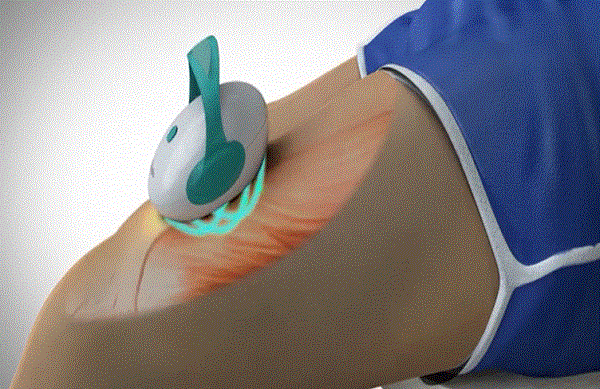Infrared therapy is a method of treating acute or chronic pain that uses light to provide relief. It is a simple and painless treatment that has been studied for its potential to reduce inflammation, improve circulation, and promote healing in the body.
The infrared light used in this therapy is invisible to the human eye but can be detected by special sensors. This light penetrates deep into the skin and tissues, providing therapeutic benefits. Infrared light helps to reduce inflammation, improve circulation, and promote healing in the body.
Infrared light therapy is becoming increasingly popular for treating chronic and acute pain in the body. This light therapy has been found to penetrate deep into the tissues, helping reduce inflammation and stimulate tissue repair. By stimulating nitric oxide production, infrared light has also been shown to help relax tense and constricted muscles, aiding in reducing pain and discomfort.
Infrared light therapy for pain relief can effectively reduce stiffness, soreness, and pain caused by a wide variety of issues, such as sports injuries, arthritis, and other degenerative conditions. In this blog post, we’ll discuss how infrared therapy works and how it can help improve overall health.
Working Of Infrared Therapy:
Infrared light is able to reach far into the skin, penetrating up to 2 to 7 centimeters deep and reaching even the muscles, nerves, and bones. Studies have found that infrared light ranging from 700 to 1000 nanometers in wavelength is particularly beneficial for treating inflammatory conditions. The healing properties of electricity have been used since 2,750 BC when electric eels were employed to give shocks.
Subsequently, electricity and magnetism were applied but failed to yield successful results. In 1975, TENS (transcutaneous electrical stimulation) was developed for treating chronic pain. It is only recently that infrared therapy has become a sophisticated form of treatment, with reports showing its ability to promote wound healing, reduce arthritis pain, and increase endorphin levels as well as bioactivation neuromodulators.
Infrared light therapy has been found to be highly effective in part due to its ability to activate nitric oxide. This potent cell signaling molecule assists with the relaxation of arteries, battles free radicals to prevent oxidative stress, inhibits platelet clumping, and is able to regulate blood pressure. Altogether, it helps promote increased circulation, which brings vital oxygen and nutrients to damaged tissues throughout the body.
Enhanced blood flow enabled by infrared light therapy results in oxygen and nutrient-rich circulation to reach cells, allowing them to run efficiently and optimally. This, in turn, helps stimulate the healing and repairing of damaged tissue while lessening pain and inflammation.
The best infrared sauna in Perth has an advanced heating system. These heaters emit gentle yet powerful infrared heat, strategically placed to evenly distribute warmth throughout the sauna. The outcome is a deeply penetrating heat that promotes muscle relaxation, joint soothing, and an overall sense of well-being.
What are the Benefits of Infrared Therapy?
The benefits of infrared therapy include improved circulation, reduced inflammation, increased endorphin levels (the body’s natural painkillers), and improved wound healing. It can also help to reduce muscle spasms and joint stiffness. In addition, it is effective in treating chronic low back pain.
Infrared therapy has also been found to be helpful in treating skin conditions such as acne, psoriasis, eczema, wrinkles, and other signs of aging. It can also help with hair loss by stimulating hair follicles and promoting healthy hair growth.
What Types of Conditions Can Be Treated With Infrared Therapy?
Infrared therapy can be used to treat a variety of conditions, including arthritis, fibromyalgia, tendonitis, bursitis, carpal tunnel syndrome, plantar fasciitis (heel pain), sciatica (nerve pain), sports injuries (sprains/strains), headaches/migraines, neck/shoulder/back pain and more. It can also be used for general relaxation or stress relief.
Is Infrared Therapy Safe?
Yes! Infrared therapy is considered safe when administered by a trained professional who follows safety guidelines set forth by the manufacturer or regulatory agency. The intensity of the light used is very low, so there is no risk of burning or damaging your skin or eyesight. However, it is important to note that this type of therapy should not be used on pregnant women or those with certain medical conditions such as cancer or heart disease without consulting your doctor first.
How Does Red Light Therapy Differ From Infrared Therapy?
Red light therapy differs from infrared therapy in that it uses visible red light instead of invisible infrared light waves. Red light therapy effectively treats wrinkles and other signs of aging and reduces the redness associated with rosacea and acne scars. It works by stimulating collagen production, which helps plump fine lines and wrinkles while improving overall skin tone and texture over time with regular use.
What Are The Risks Associated With Red Light Therapy?
As with any form of treatment, there are some risks associated with red light therapy, including temporary redness or irritation at the site where the treatment was applied as well as an increase in sensitivity to sunlight after treatment which may require additional sunscreen protection when outdoors for extended periods of time following treatment sessions.
Additionally, if you have any pre-existing medical conditions such as cancer, it’s important to consult your doctor before undergoing any form of red light therapy treatment.
Is there an available infrared sauna for homes?
Yes, infrared saunas designed for home use are available in various sizes and styles. They come in portable and permanent installation formats, catering to different preferences and space considerations. These home saunas offer the same health benefits as those in professional facilities, such as relaxation, improved circulation, and potential detoxification.
They provide the convenience of any time use without the need to travel to a separate location. Before purchasing, it’s advisable to research different models, consider space constraints, and ensure the sauna meets specific health and safety standards. Professional consultation may be beneficial for a safe and effective setup.
Considerations when buying a home infrared sauna include the size and space available, with options ranging from portable to fixed models. Evaluate heating technology, such as carbon fiber or ceramic heaters, to ensure even heat distribution. Check electromagnetic field (EMF) levels for safety.
Assess the sauna’s wood type, commonly cedar or hemlock, for durability and moisture resistance. Evaluate assembly preferences and electrical requirements for installation. Ensure adjustable temperature controls and look for safety features like proper ventilation. Check for safety certifications and review warranty terms.
Do Infrared Saunas Have Any Health Benefits?
Yes! Studies have shown that regular use of an infrared sauna may help improve cardiovascular health, reduce stress, relieve muscle tension, aid detoxification, boost immune system function, improve sleep quality, reduce inflammation, relieve joint pain, speed up recovery after exercise, improve skin tone & texture, aid weight loss efforts & more. As always, it’s important to consult your doctor before using an infrared sauna if you have any pre-existing medical conditions.
Conclusion:
Infrared therapy is a safe and effective way to treat many types of acute or chronic pain while promoting healing within the body. In addition, red light therapy has been found beneficial for treating wrinkles & other signs of aging while helping boost collagen production & improving overall skin tone & texture over time.
Finally, regular use of an infrared sauna may offer numerous health benefits, including improved cardiovascular health, reduced stress levels & improved sleep quality. It’s important to always consult your doctor before undergoing any form of infrared therapy, particularly if you have pre-existing medical conditions.










